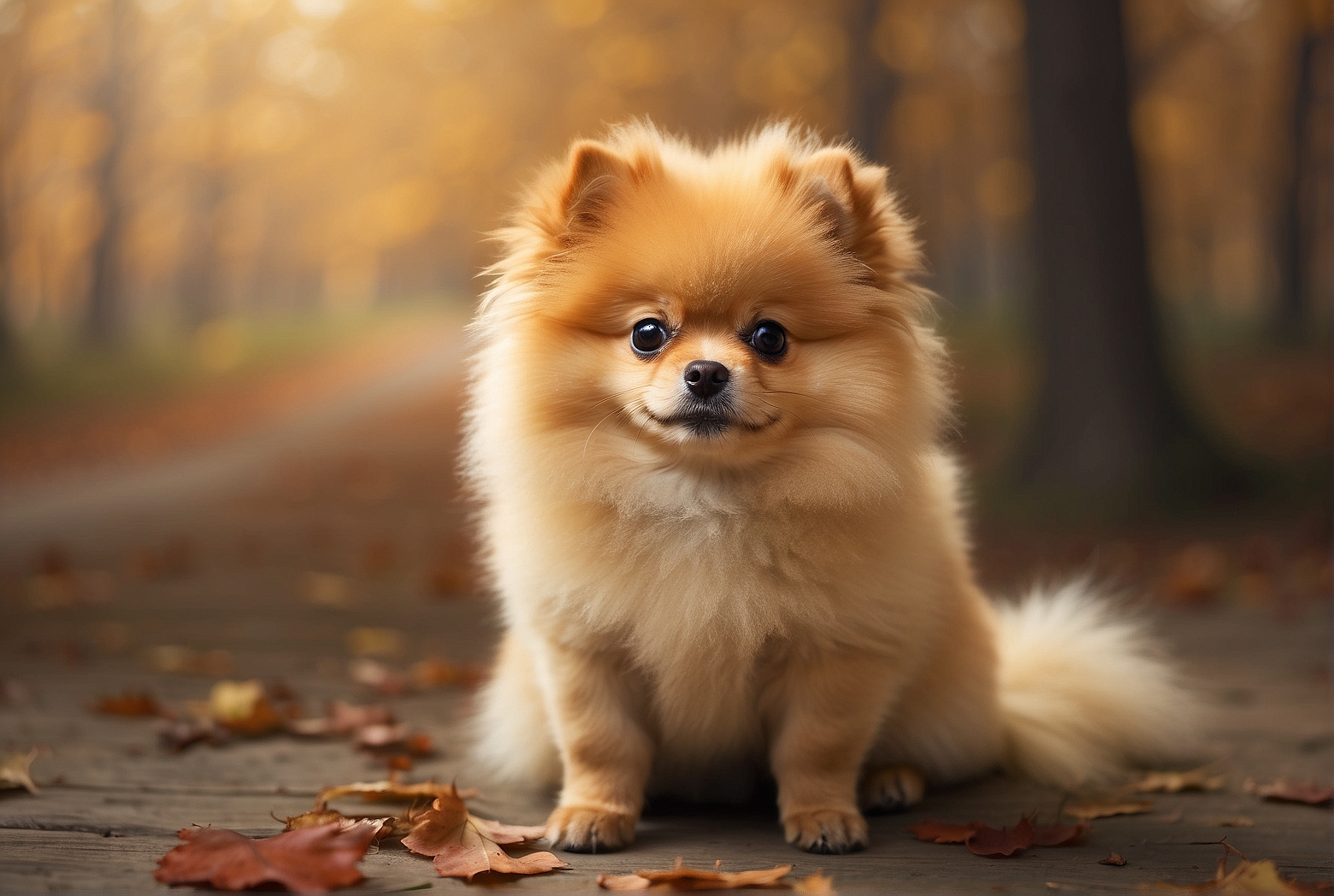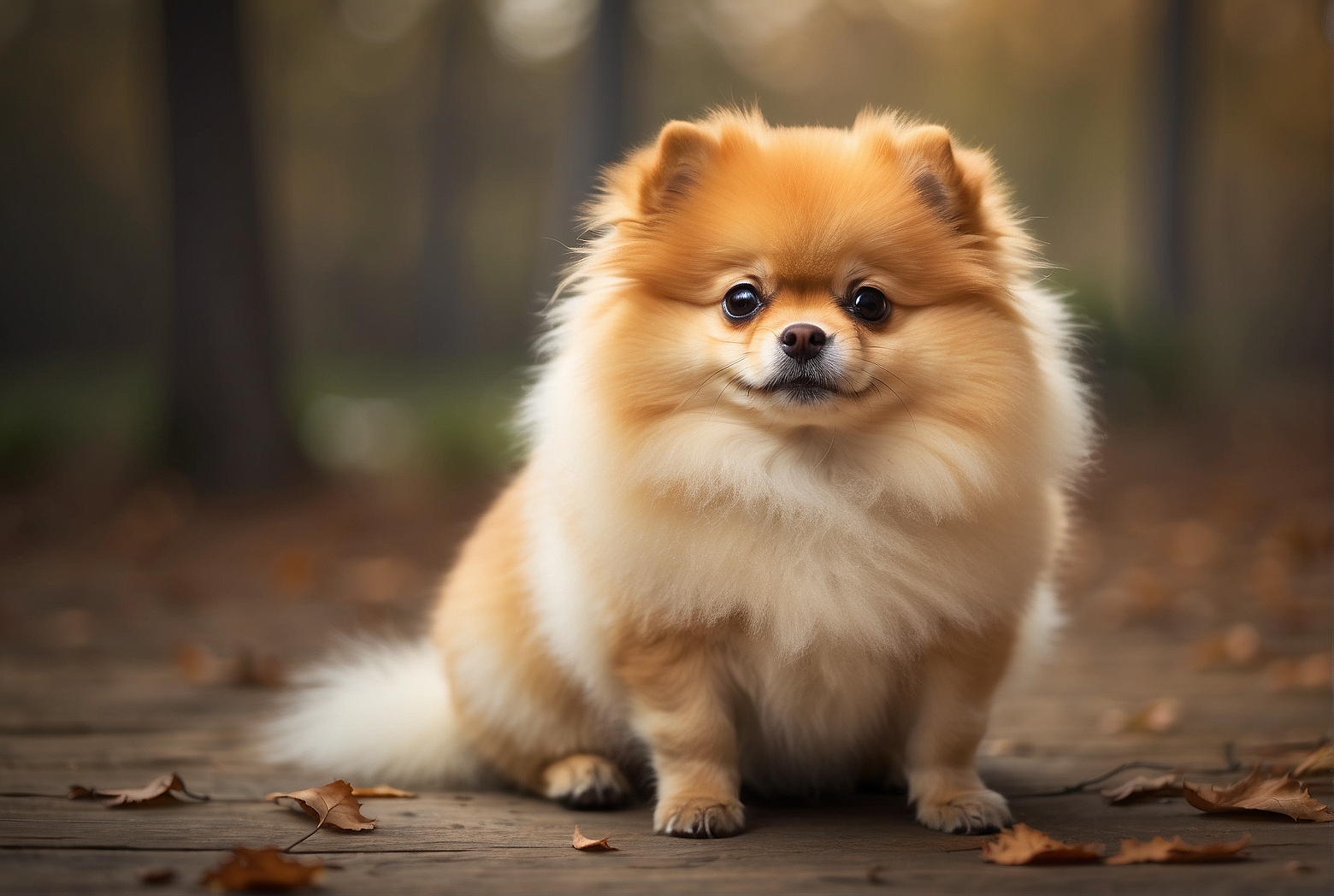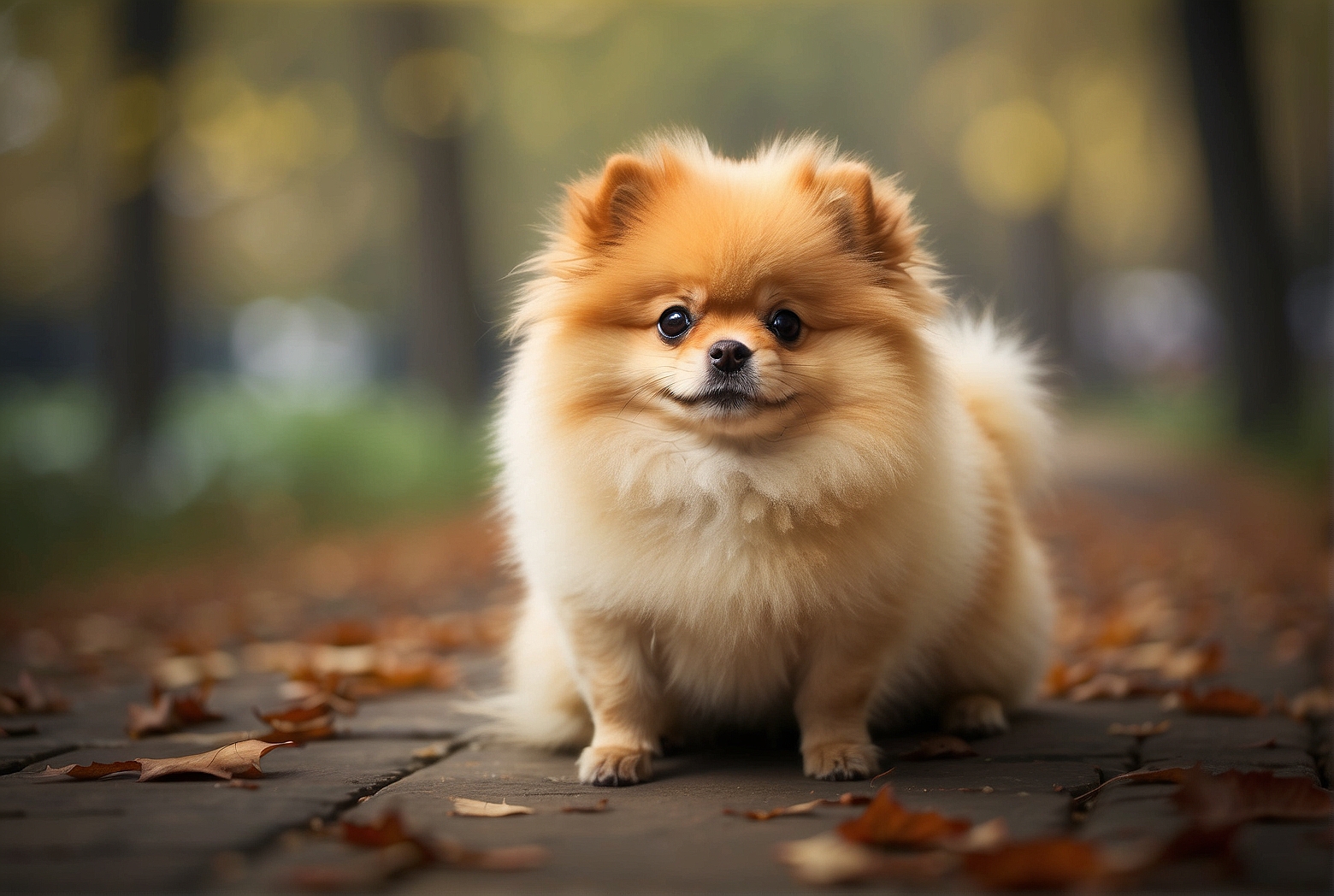Have you ever wondered why your Pomeranian is smaller than the average size for their breed? In this article, we will explore the reasons behind this phenomenon and provide you with a better understanding of why your furry friend may be on the petite side. Additionally, we will touch upon some key points about the Great Dane dog breed and discuss if there is any connection between these two seemingly opposite-sized dogs. So, let’s embark on this fascinating journey to uncover the secrets behind your adorable but diminutive Pomeranian!
Genetics
Inheritance
The size of a Pomeranian can be influenced by genetics. Like all other traits, size is determined by the genes inherited from both parents. If both parents are small in size, it is more likely that their offspring will also be smaller. On the other hand, if one or both parents are larger, there is a chance that the puppy will grow to be larger as well.
Size variability
Pomeranians come in a variety of sizes, even within the same litter. This size variability is due to the presence of different genes that control growth and development. Some puppies may inherit genes for smaller size, while others may inherit genes for larger size. It is important to remember that size is not the sole indicator of a Pomeranian’s health or quality.
Runts
In some cases, a Pomeranian puppy may be born considerably smaller than its littermates. These smaller puppies are often called “runts.” Runts can occur due to various factors, such as genetic variations or prenatal complications. While runts may be smaller in size, they are not necessarily unhealthy or inferior to their siblings. Proper care and nutrition can help runts grow and thrive just like their littermates.
Dwarfism
Dwarfism is a condition that can affect Pomeranians, leading to smaller size and other physical abnormalities. It is caused by genetic mutations that affect the production of growth hormones or the development of bones and cartilage. Pomeranians with dwarfism may have shorter legs, a larger head in proportion to their body, and other skeletal issues. It is essential to understand that dwarfism is not something to be ashamed of or looked down upon; it is just a variation within the breed.
Health Factors
Underlying health conditions
Certain underlying health conditions can contribute to a Pomeranian’s smaller size. Medical conditions such as hormonal imbalances, metabolic disorders, or malabsorption issues can affect growth and development. If you notice that your Pomeranian’s growth is significantly stunted or they are not gaining weight as expected, it is important to consult a veterinarian to rule out any underlying health issues.

Poor nutrition
Proper nutrition is crucial for the healthy growth and development of a Pomeranian. If a puppy does not receive adequate nutrients, it may affect their overall size and development. A diet lacking in essential vitamins, minerals, and calories can hinder growth. Feeding your Pomeranian a balanced and nutritionally complete diet, formulated for their specific life stage, will help ensure proper growth.
Stress
Stress can have a significant impact on a Pomeranian’s growth and overall health. Chronic stress can lead to reduced appetite, weight loss, and slower growth. It is important to create a calm and stable environment for your Pomeranian, providing them with plenty of love, attention, and opportunities for relaxation.
Infections
Certain infections, especially during early development, can interfere with a Pomeranian’s growth. Infections like parvovirus or severe respiratory infections can cause a puppy to be underweight and smaller in size. Timely vaccination and proper veterinary care can help prevent and treat infections, minimizing their impact on a Pomeranian’s growth.
Breeding Practices
Intentional breeding for smaller size
Some breeders intentionally breed Pomeranians for smaller size, aiming to meet certain breed standards or cater to specific preferences. By selectively breeding smaller dogs, they may achieve a line of Pomeranians that consistently produces puppies on the smaller end of the size spectrum. However, it is crucial for responsible breeders to prioritize the health and well-being of the puppies over size alone.
Unreputable breeders
Unfortunately, there are breeders who prioritize profits over the health and welfare of the Pomeranians they breed. Unreputable breeders may engage in unethical practices, such as overbreeding or breeding unhealthy dogs. Puppies from such breeders may be smaller in size due to poor breeding practices or genetic issues. It is crucial to choose a reputable and responsible breeder when considering adding a Pomeranian to your family.
Inbreeding
Inbreeding, the mating of closely related dogs, can lead to a higher likelihood of genetic abnormalities, including smaller size. Continual inbreeding can concentrate and amplify undesirable genetic traits, leaving the offspring more susceptible to health problems. Responsible breeders should avoid excessive inbreeding, instead focusing on breeding healthy Pomeranians with diverse genetic backgrounds.

Mixed breed genetics
If a Pomeranian is a mixed breed, the size can be influenced by the genes inherited from other breeds. Mixed breed Pomeranians may display a wider range of sizes, influenced by the genetic contributions from both Pomeranians and other breeds. This can result in variations in size, even within the same litter.
Age
Puppy size
Pomeranian puppies are typically smaller in size compared to adult Pomeranians. They go through a rapid growth phase in their first few months of life, but their size is still relatively small. It is essential not to compare a young puppy’s size to that of an adult Pomeranian, as they are still in the early stages of development.
Growth rate
Pomeranians, like most small dog breeds, have a faster growth rate during their early months compared to larger breeds. They tend to reach their adult size more quickly. However, the exact growth rate can vary from dog to dog, depending on factors such as genetics, nutrition, and overall health.
Late bloomers
Some Pomeranians may experience a delayed growth spurt and reach their full size later than expected. These “late bloomers” may appear smaller than their counterparts of the same age, causing temporary concern. However, with proper care, nutrition, and time, these Pomeranians will eventually catch up and achieve their full size.
Gender
Male vs. female size differences
In general, male Pomeranians tend to be slightly larger in size compared to females. The size difference between males and females is usually minimal, with no significant impact on their overall health or quality. It is important to note that individual genetics, nutrition, and other factors can still influence the size of both male and female Pomeranians.
Size based on neutering/spaying
Neutering or spaying a Pomeranian may have a small impact on their size, but it is not a guaranteed factor. Some studies suggest that neutering or spaying can lead to a slight decrease in growth rate, potentially resulting in smaller size. However, the difference is usually minimal, and other factors such as genetics and nutrition still play a more significant role in determining a Pomeranian’s size.
Environmental Factors
Living conditions
The living conditions in which a Pomeranian is raised can influence its size and overall health. Adequate space, appropriate comfort, and a stress-free environment are crucial for healthy growth and development. A cramped or stressful living environment may affect a Pomeranian’s appetite, leading to slower growth and potentially smaller size.
Exposure to toxins
Exposure to toxins, such as chemicals or certain household plants, can have adverse effects on a Pomeranian’s health and growth. Ingestion or inhalation of toxic substances can disrupt their growth patterns, leading to stunted growth or other health issues. Ensuring a safe and toxin-free environment is essential for the well-being of your Pomeranian.
Socialization
Proper socialization is vital for a Pomeranian’s overall well-being, including their growth and development. Regular interactions with other dogs, humans, and various environments provide mental and physical stimulation, contributing to their healthy growth. A poorly socialized Pomeranian may experience more stress, which can indirectly impact their size.
Exercise levels
Regular exercise is important for a Pomeranian’s overall health, muscle development, and weight management. Appropriate exercise stimulates proper growth and maintains a healthy body composition. However, excessive exercise or inadequate rest can be detrimental to growth and cause a Pomeranian to be smaller than average. It is important to provide balanced exercise routines suitable for your Pomeranian’s age and physical capabilities.
Breed Standards
Pomeranian breed standards
The Pomeranian breed has specific standards set by kennel clubs and breed organizations. These standards outline the desired characteristics, including size, coat type, and overall appearance. Breeders often aim to breed Pomeranians that meet these standards to ensure consistency within the breed. However, it is important to remember that size variations can still occur within the breed, and adherence to the standard should not compromise the Pomeranian’s health and well-being.
Size variations within the breed
While there are general standards for Pomeranian size, there can still be variations within the breed. Some Pomeranians may fall on the smaller side of the size spectrum, while others may be larger. These variations are not necessarily indicative of poor breeding or health concerns. As long as a Pomeranian is healthy, well-cared for, and within a reasonable size range, they can still be considered a quality representative of the breed.
Parentage
Size of the parents
The size of a Pomeranian’s parents can be a significant factor in determining their size. If both parents are small, it increases the likelihood of their offspring being smaller as well. Similarly, if one or both parents are larger, there is a higher chance of their puppies growing to be larger in size. However, genetic inheritance is complex and not solely dependent on the parents’ sizes, so there can still be variations.
Health and genetics of the parents
The health and genetics of a Pomeranian’s parents can have an impact on their size. If the parents have underlying health conditions or genetic abnormalities, it can potentially affect the size and overall well-being of their offspring. Responsible breeders prioritize breeding Pomeranians with good health records and diverse genetic backgrounds to minimize the risk of passing on health issues to their puppies.
Early Development
Prenatal influences
Prenatal influences can play a role in determining a Pomeranian’s size. The health and nutrition of the mother during pregnancy can contribute to the development of the puppies. Adequate prenatal care, including a balanced diet and proper veterinary check-ups, is essential to ensure the healthy growth of the unborn Pomeranian puppies.
Birth complications
Complications during birth can also impact a Pomeranian’s size. Difficult labor or inadequate prenatal care can result in underdeveloped puppies or stunted growth. It is crucial to have a skilled veterinarian present during the birthing process to address any potential complications and ensure the health and well-being of both the mother and the puppies.
Postnatal care
Postnatal care is essential for the healthy growth and development of Pomeranian puppies. Proper nutrition, warmth, and a clean environment are crucial during the early stages of life. Regular check-ups with a veterinarian and adherence to recommended vaccination schedules and deworming protocols are necessary to ensure that the puppies are growing properly.
Individual Variation
Unique genetic makeup
Each Pomeranian has a unique genetic makeup, which can contribute to variations in size. Genetic factors, including the inheritance of specific genes, can influence growth, bone structure, and overall size. Even within the same litter, individual Pomeranians may display different growth patterns and mature at different rates, resulting in variations in size.
Different growth patterns
Pomeranians, like any other dog breed, can have different growth patterns. Some may experience faster growth during certain phases, while others may have a more gradual and consistent growth rate. These growth patterns are influenced by various factors, including genetics, nutrition, and overall health.
Natural size range
It is important to understand that there is a natural size range within the Pomeranian breed. Not all Pomeranians will grow to be the same size, and small variations are common. As long as a Pomeranian falls within a healthy weight range and exhibits good overall health, their size can be considered within the normal range for the breed.
In conclusion, there are several factors that can contribute to a Pomeranian being smaller than average. These include genetics, health factors, breeding practices, age, gender, environmental factors, breed standards, parentage, early development, and individual variation. Understanding these factors can help Pomeranian owners better comprehend their dog’s size and ensure they provide the necessary care and attention for their pet’s well-being, regardless of their size. Remember, the size of a Pomeranian does not define their worth or value; it is their personality, love, and companionship that truly matter.
